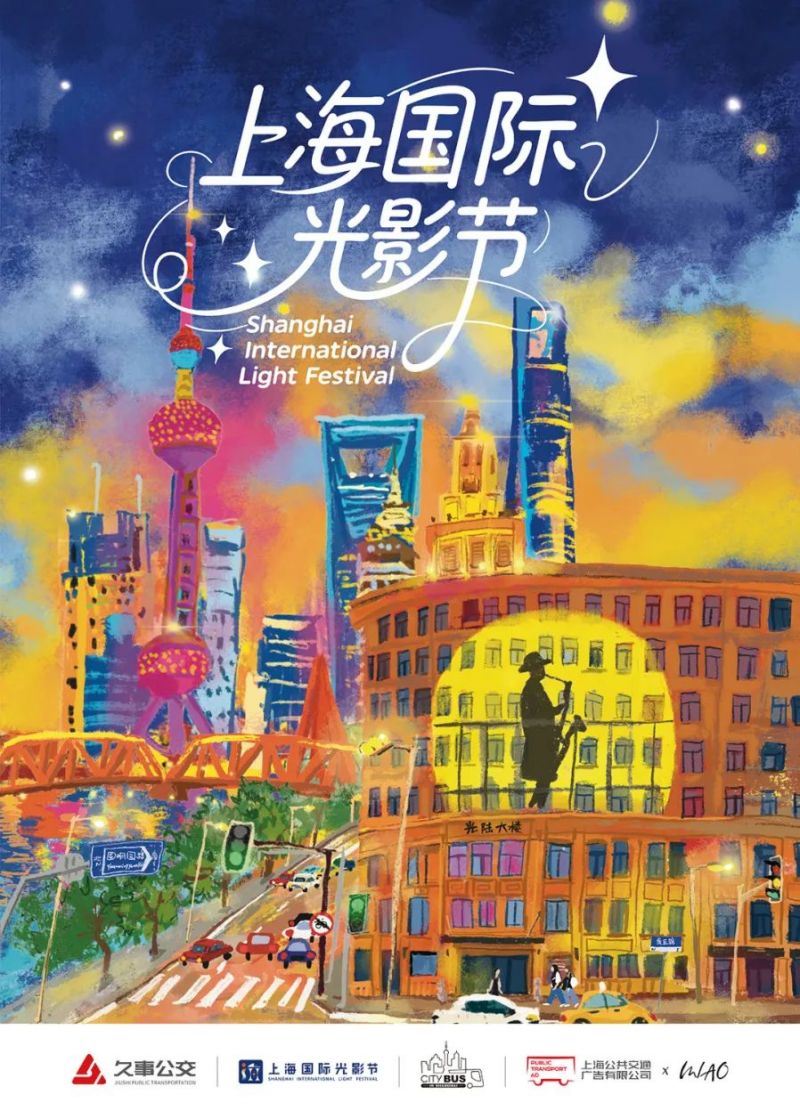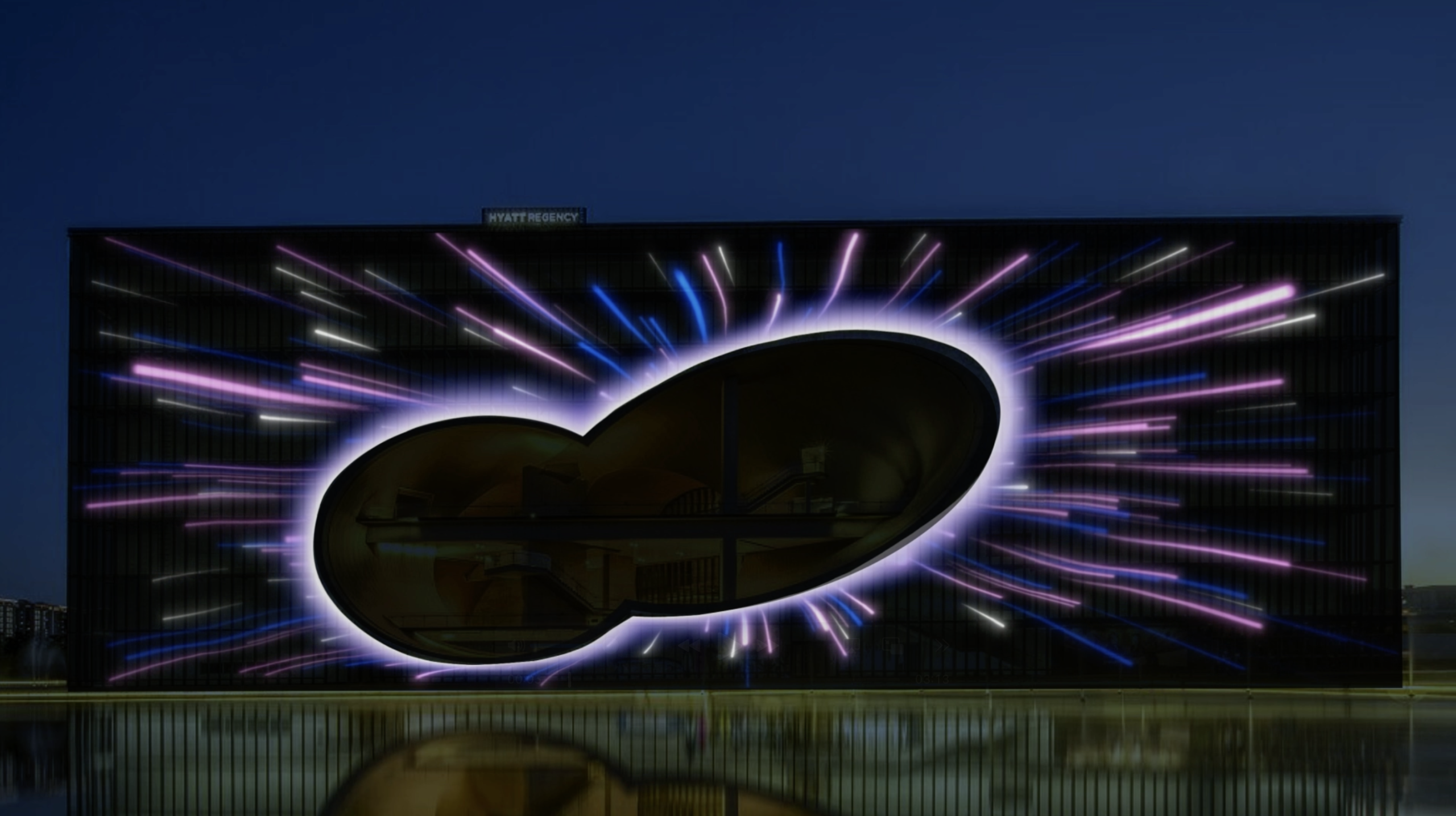Students shine bright at Shanghai International Light Festival
A student team from the Digital Media Arts programme of the Academy of Film and Creative Technology (AFCT) at Xi’an Jiaotong-Liverpool University has been shortlisted for the “Poly Grand Theatre Special Award” at the second Shanghai International Light Festival for their work “Lightweaving Shanghai: Metamorphosis”.

2025 Shanghai International Light Festival
From campus to canvas
The team, composed of Minyu Yao, Yingchu Ma, Xukang Shi, and Vincent Delporte, drew their inspiration from the University’s 2025 Summer Undergraduate Research Fellowship (SURF) project. Under the supervision of their lecturer Tian Leng, they initially designed an interactive projection installation for the campus’s Gate of Wisdom. The project sparked a bold idea: transforming entire cityscapes into canvases of light.
The team members asked themselves, “If we could animate campus buildings, why not city architecture?” Motivated by this question, they entered the competition, taking their first step from the classroom to an international creative stage.
“We wanted to broaden our creative experience and apply what we’ve learnt in class to a more challenging, real-world context,” Yao says.
Their work uses the metaphor of a butterfly emerging from a cocoon to trace Shanghai’s transformation – from its origins as a port city to its vision for an intelligent, connected future. The team integrated the Shanghai Poly Grand Theatre’s tunnel-like holes structure into their visual storytelling, turning it into a central feature symbolising rebirth and transformation.
“What first appeared as a limitation became the heart of our concept,” Yao says. “This project taught us how to turn constraints into creative strengths.”

Screenshot of the work
From concept to creation
Despite being first-time participants in architectural projection, the four students completed the entire creative process – from conceptual design to final production and music composition – in under a month. Each member took charge of a specific narrative segment, ensuring a cohesive visual flow through unified colour themes.
The soundtrack was created with the support of an AI music platform, enabling students without formal musical training to realise their intended sound while avoiding copyright risks. The team noted that the project drew upon nearly every aspect of their coursework, making it a comprehensive test of their learning.
Lecturers Tian Leng and Yu Sheng provided guidance in visual style, colour rhythm, and music design. “The students’ initial colour palette was too restrained,” Leng notes. “After refinement, the visual energy aligned much better with the theme of transformation.”
Yu emphasises the balanced use of technology: “AI should serve as an accelerator, not a replacement for creativity. We encourage students to use it efficiently but ensure their ideas remain the driving force.”

From left to right: Yu Sheng, Minyu Yao, Yingchu Ma, Xukang Shi, Vincent Delporte, Tian Leng
Project-based learning in the real world
Faced with a tight timeline and a minimum duration requirement of three minutes, the team held daily meetings to synchronise progress and refine their visuals. Some sequences were generated using AI to maintain production speed. Unlike classroom assignments that allow for some flexibility, this project had to follow the strict standards and specifications of a real-world industry brief, giving students a taste of the professional production process.
“The time pressure pushed us to be more efficient and gave us a deep appreciation for project management – finding a balance between creative freedom and structured deadlines,” Yao reflects. “It also helped us understand how creative ideas need to respond to technical and spatial requirements in real-world practice.”
Although their work was not projected live at the Shanghai Poly Grand Theatre, the team stood out as the only student group shortlisted in the category, earning praise from both organisers and industry professionals. “This experience made me truly understand the expressive power of architectural projection,” says Yao. “It gave me confidence to explore more forms of digital art in the future.”
This recognition not only highlights the students’ creativity and technical skill but also exemplifies AFCT’s project-based learning approach. From AI integration to teamwork and real-world application, XJTLU students continue to illuminate the evolving dialogue between art and technology – painting the future of creative storytelling, one beam of light at a time.
By Wenzhen Li
Edited by Patricia Pieterse
Video and Photos courtesy of Minyu Yao and Zhenyu Wang
Legal Disclaimer:
EIN Presswire provides this news content "as is" without warranty of any kind. We do not accept any responsibility or liability for the accuracy, content, images, videos, licenses, completeness, legality, or reliability of the information contained in this article. If you have any complaints or copyright issues related to this article, kindly contact the author above.
